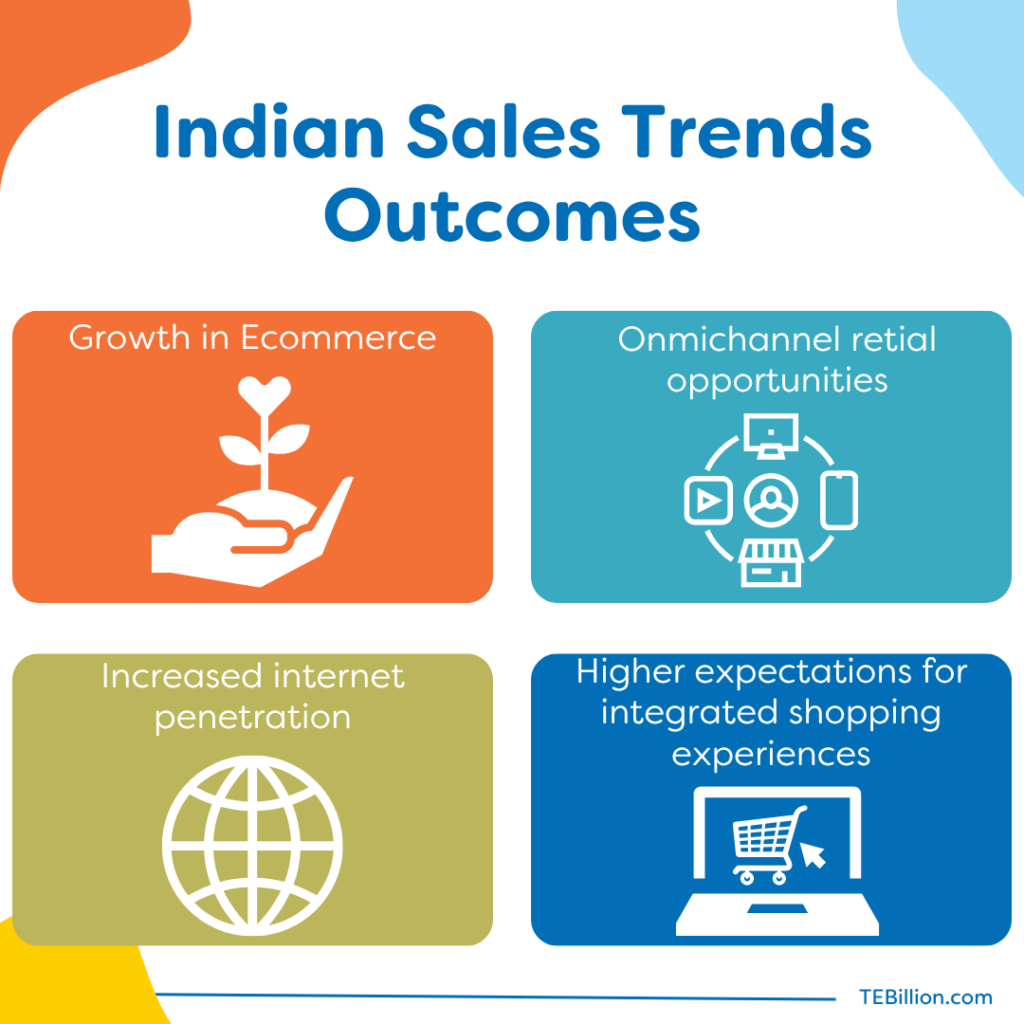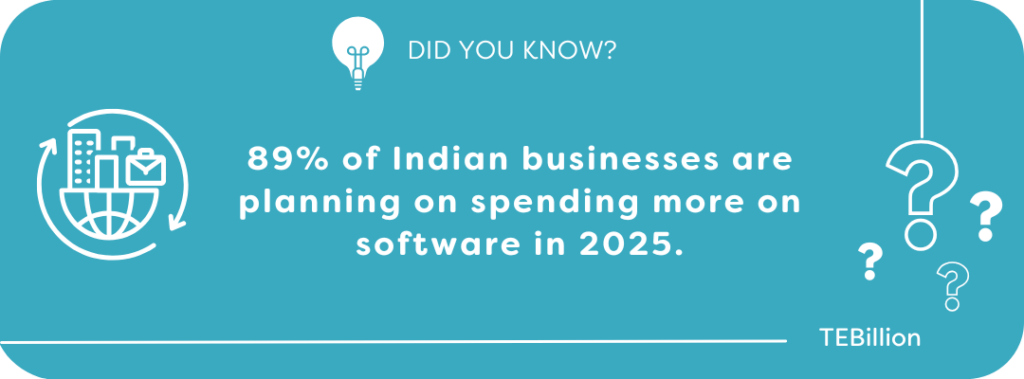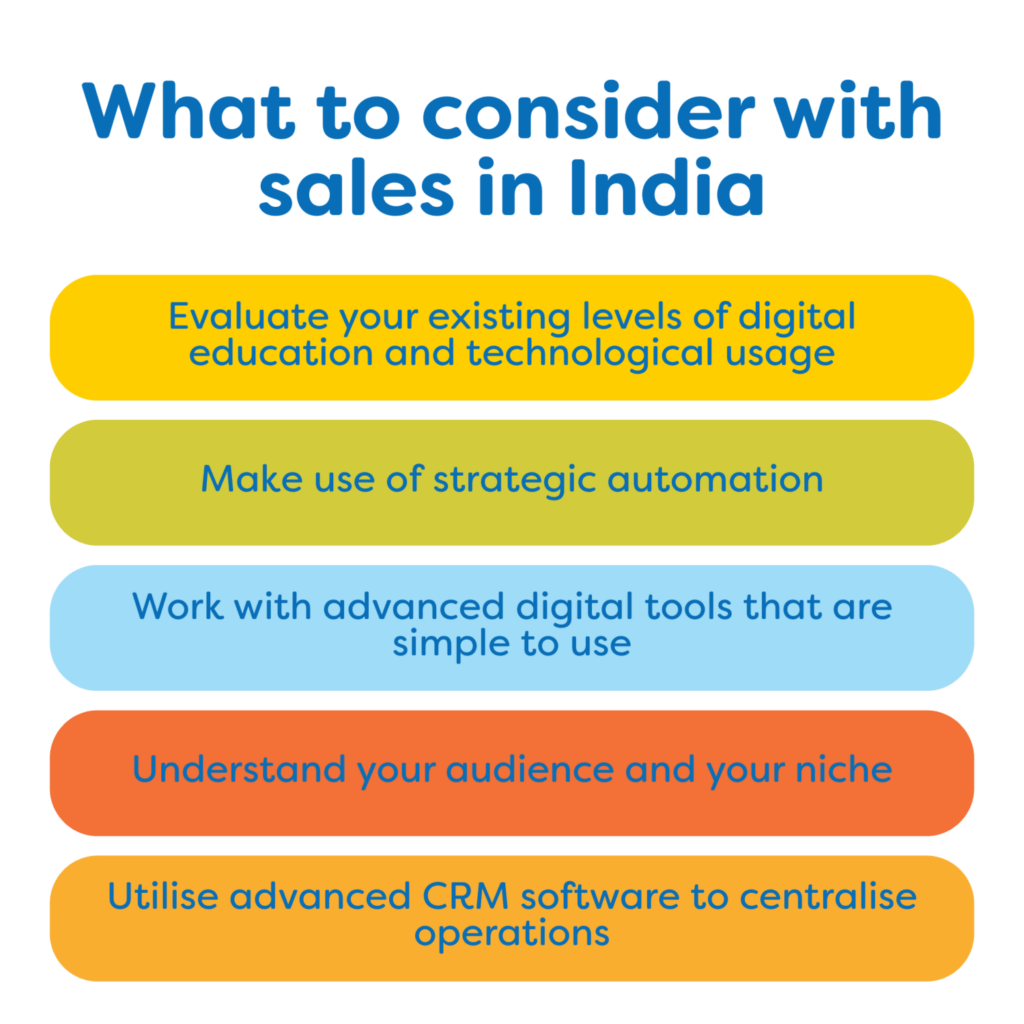
In order to make the most of your business, and direct your activities to their most profitable conclusions, you need to ensure you are up to date with the latest trends and upcoming innovations. Sales trends in India have been seeing a marked shift towards digital options, which is changing the way many companies do their business.
In this article we are going to look at why sales trends are shifting in India, the key trends shaping the Indian market, and how businesses can adapt to these new trends. Then we will look at the role of digital payments and fintech in sales growth and finish up with what is predicted for future sales trends in the country.
Sales trends in India have been evolving in recent years with considerably more focus developing on digital solutions, time-saving innovations, and a higher degree of transformative Information Technology (IT) infrastructure being set in place.
For businesses in India, this has seen:

These changes have been driven by a range of factors such as:
Different markets and niches have been seeing rapid growth and development, which is requiring businesses within many sectors to re-evaluate their existing operations and working patterns and adopt modern digital technology to handle the evolution.
Some of the key industries and areas which have been seeing positive change include:

Being able to make the most of digital trends and new technological infrastructure is essential for modern Indian businesses. With the support of the right tools and programs, the potential for new customers and profits could be game changing.
TEB is designed to help you maximise your lead conversions and make sure that your business is capable of using your resources to their full potential. With a wide range of built in functions, and powerful supporting software, your business will be capable of handling the ongoing digital evolution with ease.
Sales trends in India can vary depending on the location and industry niche, so it is important to be aware of your own industry and what is making changes with your own companies and your competitors.
In general, however, the key sales trends that are currently shaping the Indian market include:
As these trends impact businesses, organised retail has also been seeing significant growth, with Deloitte revealing that it is expected to grow from its current share of 18-20% to around 25-30% in 2025.
Capterra India found that the majority (89%) of Indian businesses are planning to spend more on software in 2025 when compared to 2024, and this is being seen as a result of being driven by India’s rapidly evolving tech landscape.

As a result of these changes, the key digital tools, processes, and software that are supporting these trends include:
Many of these technologies have been adopted and are in use on a global scale, and the Indian market is finding that these key technologies will play a strategic role in future development, growth, and the ability to expand operations on a consistent, sustainable scale.
In order to manage your operations, it is essential that you look at the tools available to you, and work with a provider who not only provides integration, advanced functionality, and evolving options, but is also one who supports you and your team with training, advice, and ongoing interactions as your business develops.
In order to adapt and evolve to make the most of sales trends in India, businesses need to have a robust digital infrastructure and the right training for their team to utilise the programs.
This has been a challenge for some businesses, especially in more rural areas where digital options are less widely available. However, as technologies become more robust and increase their availability, smaller and more remote companies are finding that addressing their existing options and embracing more data-driven solutions is becoming more viable, and affordable.
Sales can be complex, and approaches may vary depending on your niche, your product, and even where you target audience are located. You may find that some styles of sales outreach do not connect with your audience because of this, so it is absolutely crucial that before you do anything else, you conduct an in-depth review of your business practices, processes, and what is specifically working (and not working) for you.
Once you know where you stand, and what your audience are expecting from you, there will be greater scope to make changes, adjust strategies, and implement new tools to enhance your operations.
As you do this, you should consider:

Having a robust digital infrastructure does mean that you need to review your existing systems and ensure the right software, platforms, and tools are in place. This may seem daunting and perhaps even an unnecessary expense – but digital evolution is not going to slow down or stop, and companies that do not prepare their businesses are going to get left behind and see less profits.
Sales trends in India have been largely digital, and this evolution has naturally resulted in more usage and demand for digital payments and fintech solutions.
According to the Fintech Times, the Indian fintech market reached $584 billion (USD) in 2022 and was projected to reach $1.5 trillion in 2025. They also revealed that analysts estimated the total addressable market would reach $1.3 trillion by 2025, with assets under management and revenue looking to reach $1.0 trillion by 2030.
Since the COVID-19 pandemic, the market share for cash transactions in India has sharply declined, and according to Statista, cash payments have now been surpassed by mobile wallets as the preferred Point of Sale (POS) payment method.
Understandably, with more focus on digital solutions and fintech options, businesses are needing to do more in order to accept different payments. This has also had a knock on effect when it comes to recording, monitoring, and managing digital payments.
Businesses within the region need to look at using tools that can provide robust, secure, and reliable billing automation which covers:
These companies are also having to look at the way their order management is being handled and are often looking to advanced order automation which will allow them to manage thousands or products, schedule payments, and keep on top of returns, refunds and cancellations.
This may seem like a tall order, but it is not impossible. This is one of the many reasons why Indian businesses are turning to TEB to ensure their data can be processed, accessed, and utilised to manage digital payments and financial solutions.
Sales trends in India are set to continue to focus on digital evolution and a demand for more personalised, ethical, and reliable engagements from brands.
As technologies become more widely available, it is expected that digital literacy and usage of software will continue to increase, leading to more exposure to wider audiences and different customers than what could previously be reached.
Businesses looking to expand and grow will need to keep a careful eye on who their customers are, what is expected from their brand, and how their direct competitors are navigating the changing landscape.
At present, some of the most significant trends which are expected to continue to play a vital role in Indian sales, and those that are expected to be introduced over the coming months include:
The future for Indian businesses is set to be an interesting time of change, growth, and a demand for more effective tools, faster functionality, and higher levels of data security and digital protection.
Whether you are looking to keep your business local, regional, national, or expand to an international or global level, the rise of omnichannel retailing and digital outreach means that sales trends in India are going to continue to focus on more futuristic solutions.
TEB is proven to drive revenue and boost lead conversions with intelligent business automation for the AI age.

Make an appointment with our experts today to discover how TEB can advance your Indian business to its most profitable potential.